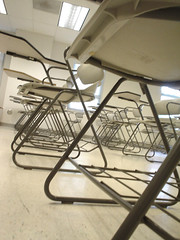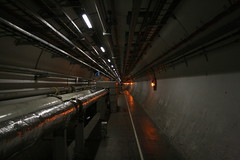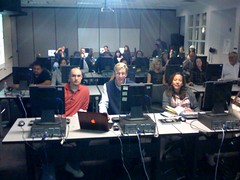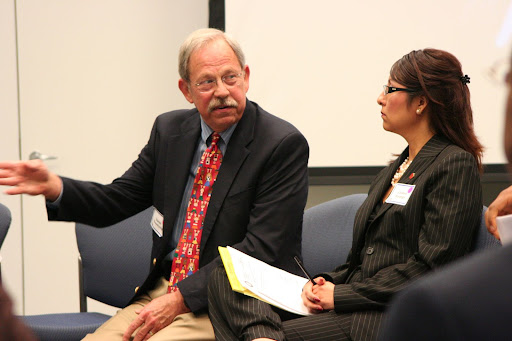 I’ve been in the air all morning (still there at this writing), so I do not know if this has hit the edublogosphere yet. But I discovered in my e-mail a IP message referencing an article from yesterday’s Washington Post.
I’ve been in the air all morning (still there at this writing), so I do not know if this has hit the edublogosphere yet. But I discovered in my e-mail a IP message referencing an article from yesterday’s Washington Post.
The College Board told U.S. teachers in an e-mail yesterday that four underenrolled Advanced Placement courses will be eliminated after the 2008-09 academic year in the first significant retrenchment of the
college preparatory program in its 53-year history.The courses being cut — Italian, Latin literature, French literature and computer science AB — are among the least popular in the AP portfolio. … The eliminated classes are “all less commonly taught disciplines in high schools,” said Trevor Packer, vice president of the College Board for AP. “And they’re under fire sometimes,” he said, in school systems more focused on core subjects.
Trustees of the New York-based College Board decided to eliminate the courses March 27 at a meeting in Reston, Packer said. The decision was communicated at 5 p.m. yesterday via e-mail to 2,519 teachers of the affected subjects and to AP program coordinators. ((de Vise, Daniel. AP Language, Computer Courses Cut.” Washington Post 4 Apr 2008, Online: http://snurl.com/23k04 [www_washingtonpost_com] .))
The IP subscriber who posted the e-mail wrote:
It’s well known that the number of university students choosing computer science as a major has been declined significantly in the past six years. Many organizations, including the the Computing Research Association, have developed strategies to address this by enlarging the pipeline. A part of this is working to increase interest in the field in high schools and middle school. Eliminating the computer science AP test will discourage high schools from offering computer science courses and their students from taking them. Here’s a story from the Washington Post. ((Finin, Tim. “College Board eliminates computer science AP test.” E-mail to IP Mailing List.5 Apr 2008.))
I’m of two minds on this. On the one hand, I’m not sure how much a Computer Science AP exam encourages high schools students to pursue CS studies. To my knowledge, it is basically a programming exam — only one aspect of CS (Please correct me if I am wrong here). I’ve heard in several conversations that colleges are losing confidence in the AP exams, as an acceptance and placement tool, because they are discovering that AP students, by and large, are taught to pass the test, not necessarily taught good Computer Science, Literature, or Mathematics. So if these observations are accurate, then I do not feel any real loss.
On the other hand, I am concerned with Tim Finin’s lament about declining enrollment of U.S. students in University Computer Science programs. I remain convinced that the problem has much more to do with how we teach computer science than the tests we give at the end. Of course the tests contribute significantly to our pedagogies, so the question that occurs to me is,
“What would computer science curriculum (k-12) look like, without a test, and with the aim of encouraging more students to pursue computer technology careers.”
But then my third mind says, “Hey, we don’t even know what computer science is going to look like 10 years from now. Computers may be programming themselves, redesigning their own circuitry, and growing their own memory. [photo ((“Last Exam.” Y-A-N. 13 May 2005. 5 Apr 2008 <http://flickr.com/photos/y-a-n/13760894/>.)) ]
E-mail Author: Tim Finin, Computer Science & Electrical Engineering, Univ of Maryland Baltimore County, 1000 Hilltop Cir, Baltimore MD 21250. finin@umbc.edu http://umbc.edu/~finin 410-455-3522 fax:-3969 http://ebiquity.umbc.edu
Blogged with the Flock Browser
Tags: warlick, education, technology, computer science, ap tests
Nowadays we are used to having hundreds of gigabytes of storage capacity in our computers. Even tiny MP3 players and other handheld devices usually have several gigabytes of storage. This was pure science fiction only a few decades ago.

 An April 6 story (
An April 6 story ( Kim Cavanaugh, author of
Kim Cavanaugh, author of  I’ve been in the air all morning (still there at this writing), so I do not know if this has hit the edublogosphere yet. But I discovered in my e-mail a IP message referencing an article from yesterday’s Washington Post.
I’ve been in the air all morning (still there at this writing), so I do not know if this has hit the edublogosphere yet. But I discovered in my e-mail a IP message referencing an article from yesterday’s Washington Post.

 The second very interesting part of the day was that it consisted of my opening one hour address, a thirty minute closing, and a one hour panel discussion among school superintendents, with questions from the audience. All of the rest of the time was spent in conversations, both heterogeneous (groups randomly mixed) and homogeneous (grouped by occupation) — very unconference.
The second very interesting part of the day was that it consisted of my opening one hour address, a thirty minute closing, and a one hour panel discussion among school superintendents, with questions from the audience. All of the rest of the time was spent in conversations, both heterogeneous (groups randomly mixed) and homogeneous (grouped by occupation) — very unconference.